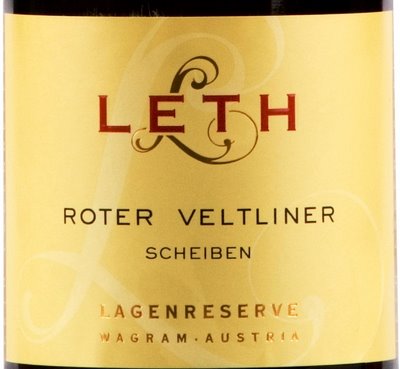Austrian trade tasting
Posted on 25 March 2009
Today was the annual Austrian tasting here in Warsaw. Ever since I remember, one of the major vinous events on our provincial market. This year’s installment was very well attended – by the public but also the producers. There were many famous names, some showing their wines for the first time: Tement, Tschida, Schloss Halbturn.
After a lengthy period in which I slowed down my tasting activities, it was also refreshing to taste a hundred samples over five hours or so. Tasting is an exercise I find stimulating intellectually and also physically; I dislike tasting too much but even more, not tasting at all for weeks.
The tasting room at Mauritiushof – Weingut Gritsch in the Wachau.
The highlights? There were good white wines from all regions of Austria, including the overperforming Federspiels from Weingut Gritsch, an up-and-coming estate in Wachau I visited last summer by pure chance (seeking refuge from torrential rain in their courtyard). Dense but fresh and mineral, these are real terroir-driven wines at very competitive prices. From those on show, the Grüner Veltliner Federspiel Axpoint 2008 and Riesling Federspiel 1000-Eimerberg 2008 were particularly convincing.
It is always engaging to taste the wines of Fred Loimer. In the past I’ve sometimes felt a little tired by their very ripe, phenolic style and modern vinification, but in last few years I find more freshness and poise (courtesy of cool vintages such as 2007 and 2008 no doubt). I’ve enjoyed the simple 2008 Kamptal DAC Veltliner and Riesling here (coloured labels) for their good content and zest, and the Grüner Veltliner Käferberg 2007 is a austere, bone-dry, almost statuesque interpretation of the grape which confirms Loimer’s position at the top of the game. Idem for the Riesling Steinmassl 2007, a big wine with impressive aromatic depth and notably little alcohol, not an obvious thing these days in Austria.
Fred Loimer at his Kamptal estate (photo taken December 2004).
But the best whites of the day, for me, came from Weingut Leth in the region of Wagram. Really surprising, as Wagram is usually considered a third league origin with little to offer but decent everyday wines. Many grape varieties are grown, adding to the confusion: Grüner Veltliner, Riesling, Sauvignon, the Pinot family, Traminer, and Roter Veltliner, a distinctive, spicy-mineral grape that is nowadays limited to 200 ha. Franz Leth belongs to the handful serious growers that are slowly changing the region’s image, and I was really impressed with the concentration and personality of the whites: the basic Grüner Veltliner and Roter Veltliner Klassik 2008 are simple but really delicious, and single vineyard offerings like the Roter Veltliner Scheiben 2008, Grüner Veltliner Brunnthal 2008 and Weissburgunder Scheiben 2007 are compelling, rich, broad, textured wines bursting with mineral and ripe fruit flavours. Crucially, they show a considerable concentration that can only be obtained by meticulous work in the vineyard from February till November. These wines are really putting Wagram firmly in the limelight.
There was a moment of bliss at the Tschida table with an exciting range of sweet wines, culminating with the Sämling TBA 2006 that is a masterpiece of elegance and precision at 180 grams of residual sugar (I’ve also tasted the 2005, which is richer, bigger and perhaps more promising for the long term); if you like a lighter and more traditional, slightly wild wine, there was also a good Muskat Ottonel Schilfwein 2004 (from grapes dried hanging from the ceiling).

Think you know your Grüner Veltliner? Try the Roter! © Weingut Leth.
Red wines were, as always in Austria, more patchy, marred here and there by a late 1990s fashion for big extract, high alcohol and lots of oak, but there were signs of spring: the Meinklang Zweigelt 2007 from a small biodynamic estate in the Burgenland, for example, was in a light, refreshing, transparent, earthy-spicy style that would have been unthinkable in Austria a decade ago (it reminded me of the biodynamic Cerasuolo di Vittoria from Sicily’s COS). Another lesser-known producer, Wachter-Wiesler in Südburgenland, offered as much refreshment with their Blaufränkisch Béla-Jóska 2006 (restrained use of oak and nicely fresh tannins) and especially the simple Zweigelt 2007, which was what Zweigelt should be but so rarely is: primary, zesty, stoney, cherryish and ungluey.
In the end of the day there was little competition for Josef Umathum, one of Austria’s shining stars (incidentally my and my colleagues’ 2008 Man of the Year at the Wino Magazine). Here, too, so much unadulterated fruit shone in the simple Zweigelt 2007 and St. Laurent 2007 that one almost forgot the more expensive bottlings. Of the latter, the Ried Hallebühl 2004 (normally the best Zweigelt on Earth) wasn’t in top form, a little reticent on the nose and alcoholic on the palate; the Pinot Noir Unter den Terrassen zu Jois 2007 was more impressive, utterly civilised, dry-spicy, bitter-earthy, unsimplified, structured, serious and compelling.
Plenty of food for thought. Austrian wines rock. I think I’ll be exploring my Austrian shelves in the cellar quite a bit this spring.
Franz Leth and Wagram loess. © Weingut Leth.

